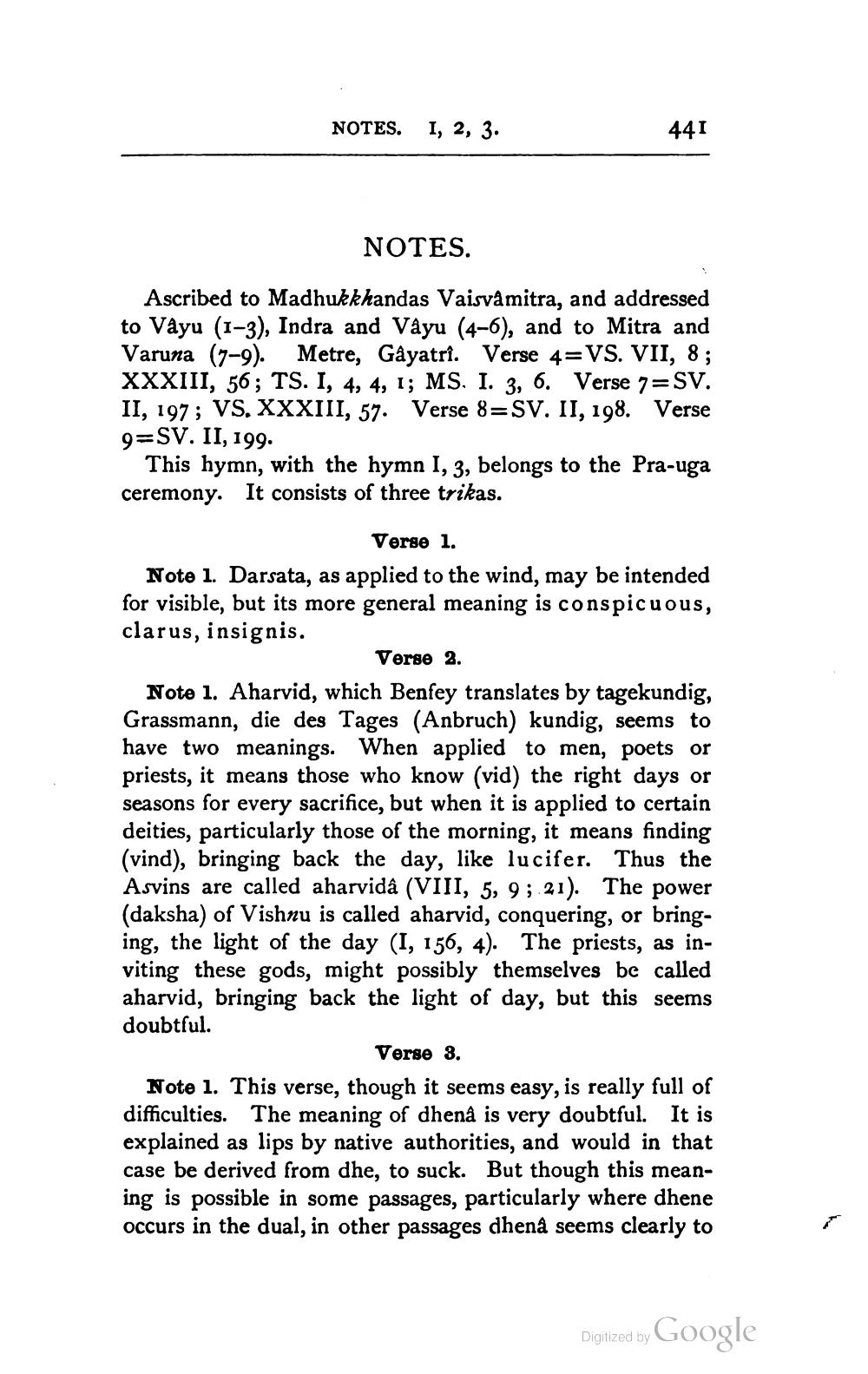________________
NOTES.
I, 2, 3.
441
NOTES.
Ascribed to Madhukkhandas Vaisvamitra, and addressed to Väyu (1-3), Indra and Vayu (4-6), and to Mitra and Varuna (-9). Metre, Gayatri. Verse 4=VS. VII, 8; XXXIII, 56; TS. I, 4, 4, 1; MS. I. 3, 6. Verse 7=SV. II, 197 ; VS. XXXIII, 57. Verse 8=SV. II, 198. Verse 9=SV. II, 199.
This hymn, with the hymn 1, 3, belongs to the Pra-uga ceremony. It consists of three trikas.
Verse 1. Note 1. Darsata, as applied to the wind, may be intended for visible, but its more general meaning is conspicuous, clarus, insignis.
Verse 2. Note 1. Aharvid, which Benfey translates by tagekundig, Grassmann, die des Tages (Anbruch) kundig, seems to have two meanings. When applied to men, poets or priests, it means those who know (vid) the right days or seasons for every sacrifice, but when it is applied to certain deities, particularly those of the morning, it means finding (vind), bringing back the day, like lucifer. Thus the Asvins are called aharvida (VIII, 5, 9; 21). The power (daksha) of Vishnu is called aharvid, conquering, or bringing, the light of the day (I, 156, 4). The priests, as inviting these gods, might possibly themselves be called aharvid, bringing back the light of day, but this seems doubtful.
Verse 3. Note 1. This verse, though it seems easy, is really full of difficulties. The meaning of dhena is very doubtful. It is explained as lips by native authorities, and would in that case be derived from dhe, to suck. But though this meaning is possible in some passages, particularly where dhene occurs in the dual, in other passages dhena seems clearly to
Digitized by
Digized by Google




